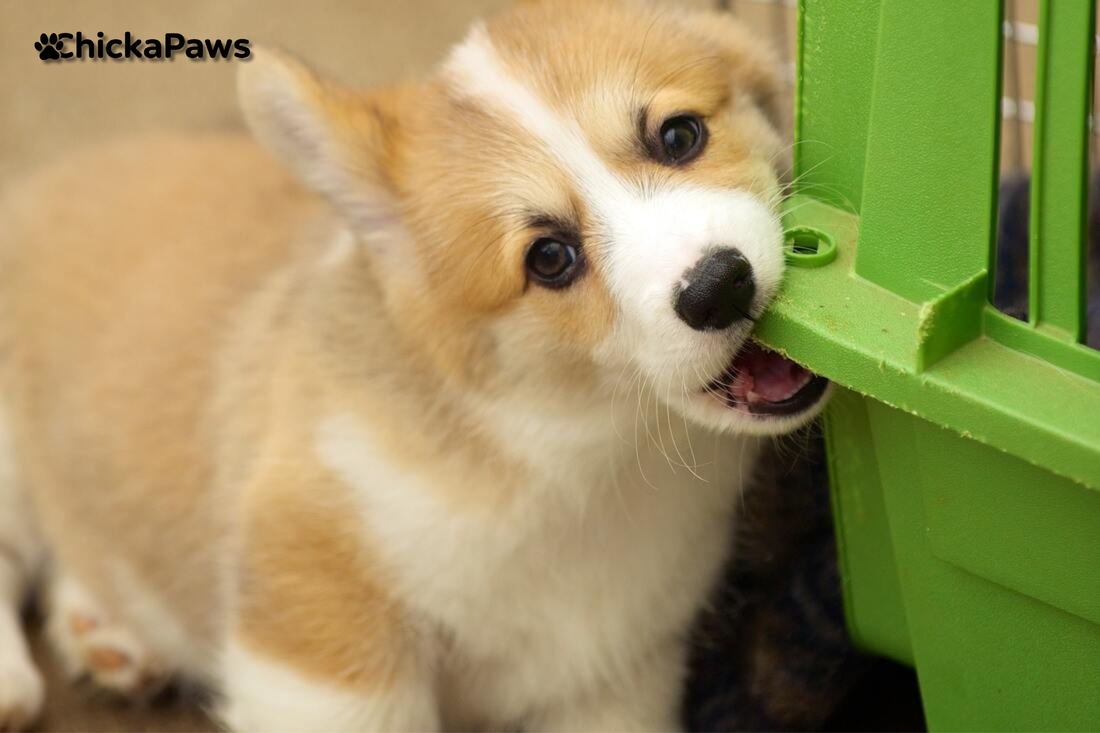
🐶 Why Dogs Chew Everything — The Real Reasons Behind the Behavior (and How to Stop It with Love)
Share
You come home after a long day — and there it is.
Your favorite sneakers shredded. Couch cushion destroyed. That look on your dog’s face? Equal parts guilt and excitement.
Frustrating, right?
But here’s the truth: chewing isn’t bad behavior. It’s communication.
Chewing is your dog’s way of expressing emotion, relieving stress, and navigating their world.
If you understand why they do it, you can stop the destruction — without breaking the bond.
🦴 Understanding Why Dogs Chew
 Dogs explore life through their mouths. For them, chewing isn’t rebellion — it’s instinct.
Dogs explore life through their mouths. For them, chewing isn’t rebellion — it’s instinct.
1. Teething and Growth (Puppies)
When puppies are between 3–6 months old, they chew to soothe their gums.
Chewing relieves the discomfort of new teeth pushing through.
👉 Pro Tip: Freeze a soft rubber toy or wet cloth to create a cool teething relief that’s safe and satisfying.
2. Boredom and Lack of Mental Stimulation
A bored dog will find something to do — and that often means your shoes.
Dogs need both physical and mental exercise. Without it, they’ll chew to pass time or release energy.
👉 Behavioral Fix: Try daily sniff walks, puzzle feeders, or hide treats around the house. Mental activity is as important as physical play.
3. Separation Anxiety
When left alone, some dogs chew because they’re anxious, not naughty.
They chew to self-soothe — much like humans bite nails when nervous.
Signs of anxiety-related chewing:
-
Happens only when you’re gone
-
Focuses on personal items (like your clothes)
-
Accompanied by pacing, whining, or drooling
👉 Solution: Gradual desensitization. Leave for short periods and reward calm behavior. Use comfort cues like a worn T-shirt that smells like you.
4. Lack of Chew-Appropriate Outlets
If your dog doesn’t have something they’re allowed to chew, they’ll choose whatever’s available.
That’s not disobedience — it’s unmet need.
Replace the “no” with “this instead.”
Offer durable chew toys designed for different chewers:
-
Soft chewers: plush or rope toys
-
Moderate chewers: rubber toys or nylon bones
- Power chewers: ChickaPaws heavy-duty toys (safe, non-toxic, made for tough jaws)
5. Stress, Fear, or Frustration
Thunderstorms, fireworks, or household tension can trigger destructive chewing.
When dogs feel unsafe, they redirect nervous energy into biting or tearing objects.
👉 Comfort Strategy: Provide a calm environment. Use white noise or soft music. Lavender aromatherapy (pet-safe) can also help ease tension.
💡 How to Stop Destructive Chewing
— The Gentle Way

1. Don’t Punish — Redirect
Yelling confuses your dog. They don’t link punishment to the act — only to your tone.
Instead, calmly take the object away, say “no” once, and offer an approved chew toy. Reward immediately when they take it.
2. Establish a Routine
Consistency builds trust.
Walk, play, train, rest — same time every day. Predictability reduces anxiety-driven behavior.
3. Positive Reinforcement Is Everything
Praise your dog for calmness and proper chewing. Dogs repeat what earns love and attention.
“Behavior reinforced is behavior repeated.” — American Kennel Club Training Guide
4. Use Management Tools Wisely
If you can’t supervise, use safe confinement (like a playpen or crate with chew toys).
Apply bitter apple spray on furniture as a deterrent — but only temporarily, never as punishment.
❤️ The Emotional Side: What Your Dog Is
Trying to Tell You

When your dog chews, they’re not being bad — they’re trying to communicate.
They’re saying:
-
“I’m lonely.”
-
“I’m bored.”
-
“I’m scared.”
-
“I need something to do.”
Once you listen, the frustration fades — replaced by understanding.
Because dogs don’t destroy out of spite. They act out of need.
And when you meet that need with empathy instead of anger, chewing stops naturally — replaced by calm, confident behavior.
